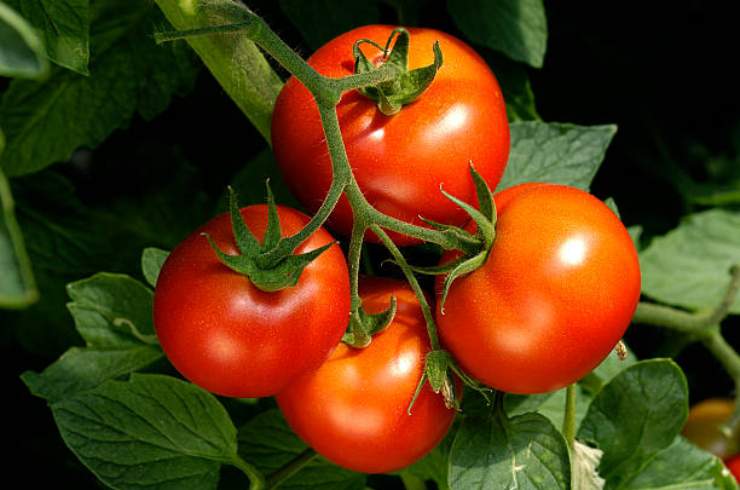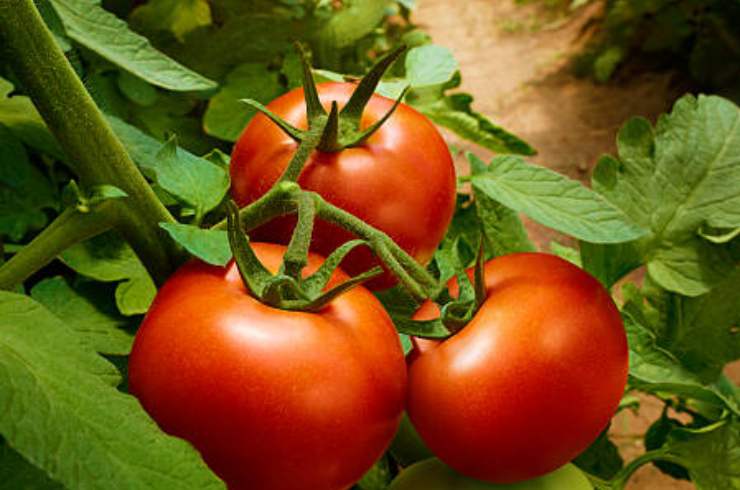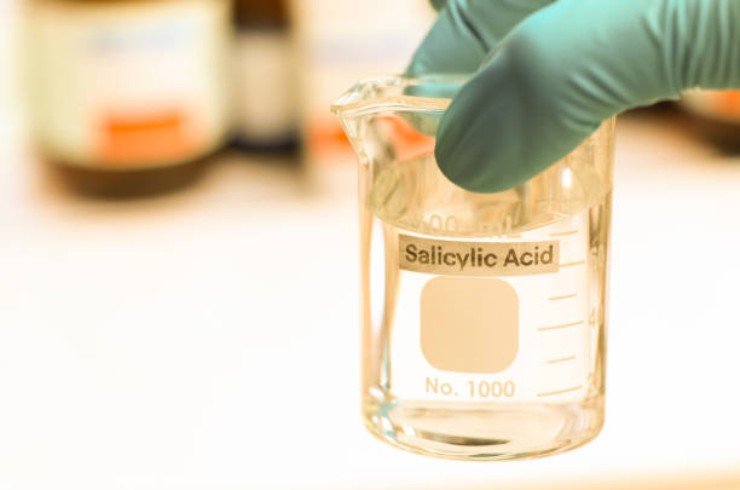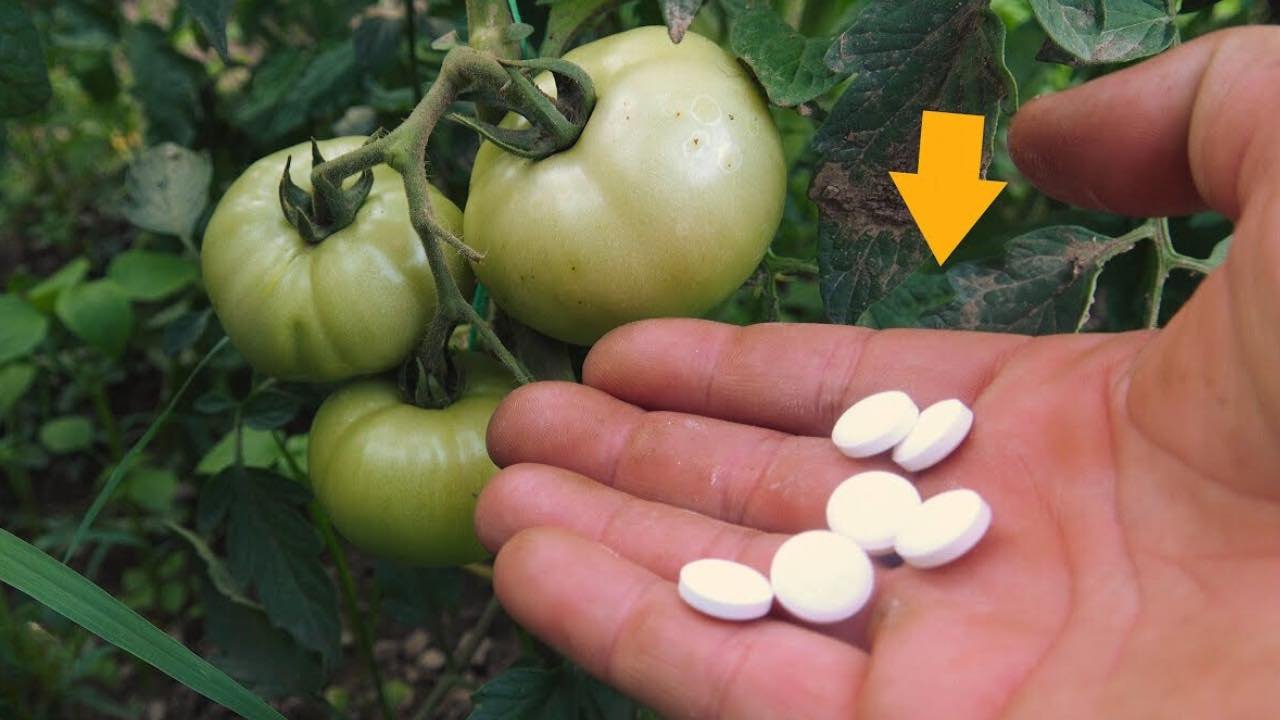This is what you have to do to get huge, red, juicy tomatoes. You have to give the plant just that. The details of the trick you may have been waiting for. The trick that will never give up..
If your goal is to be successful in growing tomato plants, it is essential to follow certain guidelines to achieve excellent results. It is a method that not everyone knows and that has also been proven by scientific studies to be extremely effective. But let’s see in detail what it is about.
Huge, red tomatoes: how to get them with this growing method
When you are passionate about growing plants, you usually look for highly valid methodologies to grow plants and their fruits in a lush and healthy way.
In this case, we are referring to the cultivation of tomato plants. In order for them to grow full of juice, huge and rich in color, it is essential to follow certain rules.

One of the most effective methods is, without a doubt, the one based on the use of two unusual but extremely valuable products.
Exactly these are classic aspirin and salicylic acid, both can be used in gardening to achieve surprising results.
Referring to the second of the two products we just mentioned, by following all the various steps explained below, you will learn everything about organic and totally natural salicylic acid, derived from the bark of the white willow.
Certainly, it is a very popular and widely used method, especially by organic horticulturists.
Huge red tomatoes: natural and organic salicylic acid
The white willow is recognized without difficulty. This is because its leaves are lighter than those of other types of trees. It also contains a species of ash and the color of its leaves tends more to gray.
Those who cannot use white willow bark use aspirin. aspirin as an alternative

Various scientific studies have widely shown that salicylic acid is generally found inside plants. In fact, plants usually produce it in special cases, such as when the plant is affected by specific problems such as mold or bacteria.
So the moment the plant has started showing the first signs of disease, it also automatically starts to secrete salicylic acid.
This natural production serves the cellular composition of the plant, activating a useful form of defense against pests and other types of problems of diseases that can affect plants.
Therefore, it is easy to understand the importance of the natural production of salicylic acid in plants.
Furthermore, the role of salicylic acid is also essential for plants for another reason: it allows them to benefit from a definitely higher yield in peppers, eggplants, potatoes and tomatoes.
In this case, however, we will focus more on the plants related to tomato production. The performance you will experience will be 45% higher, leaving you literally amazed.
The growth of tomato plants with the effect of salicylic acid
From what we have read previously, the salicylic acid in the tomato plant has a notable effect, since it serves for protection and prevention of any disease< a i=2> that could affect the plant. These include, for example, downy mildew, powdery mildew and fungi.
It has been discovered that using basic elements such as white willow bark, salicylic acid or aspirin can be an excellent way prevention against tomato plants.

So you can have a healthy plant without various problems.
However, one aspect to highlight is that these means cannot cure the plant already affected by a disease. It follows that the use of aspirin from the first treatment of the plants is essential.
How to use aspirin for plants: precise information
First, you need to know how much water to use for aspirin. Thus, for one aspirin tablet you will need a total of 3.5 liters of water. This is the proper dosage designed specifically for this purpose, so it is not at all harmful to plants.
Note that both salicylic acid and aspirin can be applied to plants in two different ways: by spraying them or by watering them.. a>

Therefore, when the plants are large but have not yet fully matured, it is good to mirror them repeatedly using salicylic acid. using salicylic acid. a>
Of course, after the rain, never before. This is a procedure that must be repeated every three weeks, to be precise every three weeks.
Among other things, salicylic acid provides optimal support for plants, even in unfavorable climatic conditions. In fact, thanks to this substance,plants tolerate humidity better, but also a state of dryness.
By choosing the organic version you can use a larger amount without fear of overdose. While aspirin is equivalent to concentrated salicylic acid and you have to be careful with the dosage.
Either way, you will end up with wonderful plants full of juicy tomatoes.
In summary, thanks to this procedure, great results can be obtained with regard to the tomato plant.
The salicylic acid in the plant will have an important effect since, as we have seen. It is useful in protecting against any disease that could harm your plant. Even by using white willow bark, such as with salicylic acid or even aspirin, it can be prevented.
In this sense, it is good to remember that all this is useful and can only be useful for plants that are not affected by diseases. Here we are talking about useful means for caring for plants from the very beginning. So why don’t you try it and see for yourself the satisfying results? The important thing is to follow all the instructions given precisely and scrupulously.

